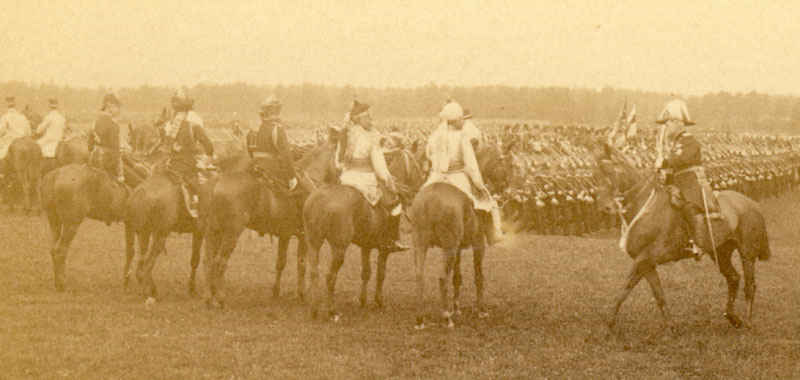Film Synopsis
The film opens with the arrival of the Komagata Maru in Vancouver Harbour in 1914. A brief description of the event is then followed by a look back at the first Sikhs to travel to Canada. These were soldiers returning from the coronation of King Edward VII in 1902. The friendly reception they were given in Vancouver, B.C., their positive impressions of Canada, and the subsequent return of some men to Canada answers the question, how did immigration from India to Canada begin?

Sikh Soldiers reviewed by the King, London 1902 (David Gray collection)
The first contingent of labourers who came to Canada in small numbers, then sent word back home to encourage others to join them. At this time more Sikh men from a few villages in the Punjab came to B.C. in village groups to seek work in a promising new country, a part of their own British Empire.
Dis-Immigration shows how this movement from India developed, how and why it was encouraged, and how the numbers of immigrants expanded until there were some 5000 Sikhs in Canada by 1908. The film looks closely at the the people who migrated, both those successful and those who were deported. The methods of travel from India and the ships that carried immigrants to Canada are also part of the story.
This great increase in numbers of immigrants from India began to affect the people and politicians of British Columbia. Newspaper articles and cartoons, letters to politicians, and communications between politicians, demonstrate the rapid descent into racism and negativism on the part of some Canadians.
The government’s 1907 Royal Commission, headed by William Lyon Mackenzie King, was established to investigate the means by which the immigration of “oriental labourers” was being encouraged. This Royal Commission is featured as a major step towards the immigration restrictions. Politicians and governments, encouraged by some Canadians, imposed restrictions on immigration from India. Political maneuvering allowed them to cut immigration without appearing outwardly racist or increasing the political unrest in India.
Canada’s new restrictive “Continuous Journey” law of 1908 was pivotal. Other restrictive immigration regulations followed, such as the requirement for each immigrant to be in possession of $200, which also severely impacted the numbers of immigrants. The prohibition of bringing wives and children over 18 years of age into Canada dramatically affected the lives of those immigrants who had already arrived.
The arrival of the Komagata Maru in 1914 was a direct challenge to these regulations. Stories of this and other later incidents are passed on down through the generations. Individual memories describe the personal effects of the immigration restrictions and the hardships they created.
The film ends with accounts of how the pioneer immigrants rose above these challenges to contribute in a positive way to Canada’s economic and cultural development.

Ticket from Hong Kong to Vancouver issued to Dewan Singh in Calcutta in 1907 (Library and Archives Canada)